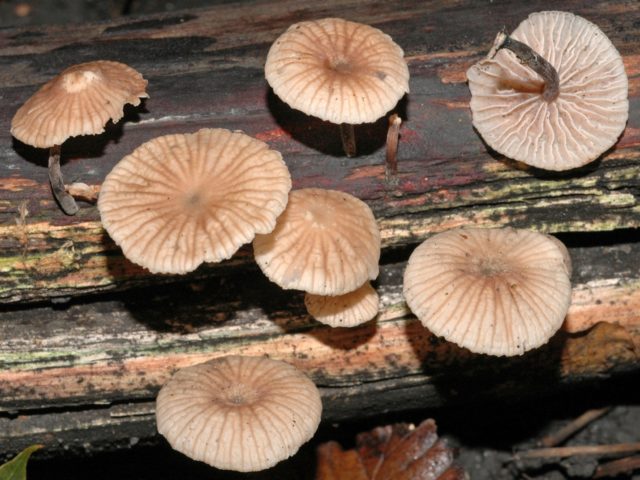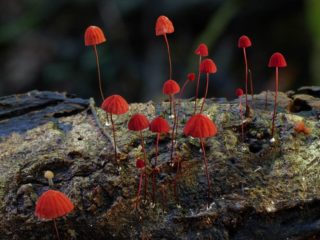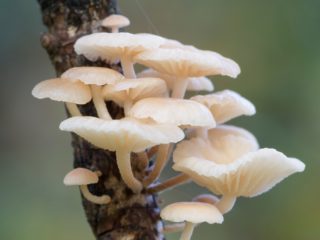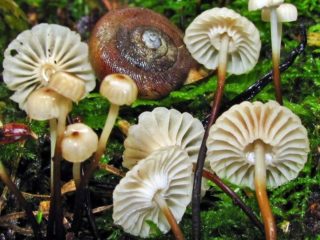Content
Saprotroph fungi, to which the stinking non-fungus belongs, render an invaluable service to the plant world - they utilize dead wood. If they did not exist, the process of decomposition of cellulose would take much longer, and the forests would long ago have turned into huge heaps of slowly decaying trees. The stinking firebrand is widespread in the world, it can also be found on the territory of Russia.
What does a smelly non-drinker look like
The species under consideration has another name, under which it can be found in the special literature - smelly micromphale. Belongs to the lamellar mushrooms of the genus Negniychnikov.
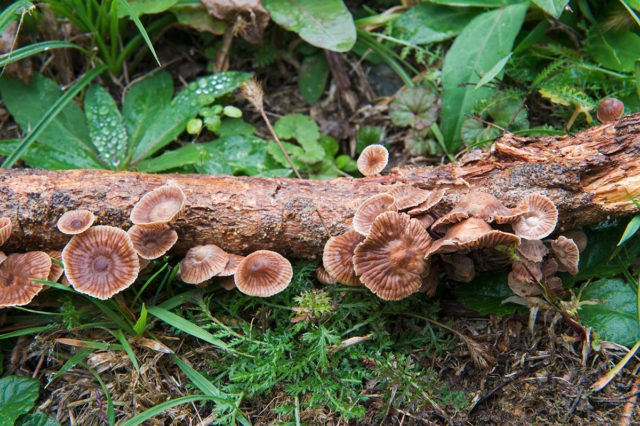
The stinking firebrand grows on dead wood
It is fairly easy to spot when found in the wild.
Description of the hat
The cap of micromphale smelly rarely reaches a diameter of 3 cm, its usual size is 1.5-2 cm. At a young age, it is hemispherical, as it grows, it becomes more and more flat and outstretched. The cap of an adult fungus is wrinkled, slightly depressed in the central region, and has wavy edges. It can be yellowish, beige, ocher or light brown in various shades, while there are radial stripes painted in darker tones.
There are a few plates on the back of the cap. They are quite dense, wavy, rare, often grow together with each other and with the leg. In young specimens, they are beige, gradually darken and become brown-ocher.
Leg description
The leg of the stinking non-stinker is thin, straight or curved, hollow inside. Its dimensions do not exceed 3 cm in length and 0.3 cm in diameter. There is a flattened thickening at the junction with the cap. The leg is brown, light-colored above, darker below, sometimes almost black, velvety to the touch.
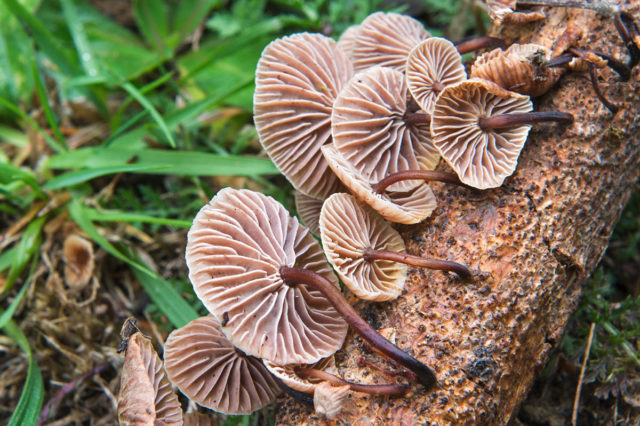
The flesh of a smelly non-stinking cap is yellow, brittle. At the leg, it is brownish, more dense.
Where and how it grows
You can meet the stinking nonnippers in the southern regions of Russia. There it grows in deciduous, rarely in mixed forests. Usually grows on old, dead wood of deciduous trees, on branches, bark, in large and small groups, often growing together. The first specimens appear in the middle of summer, and active fruiting ends in late autumn.
Is the mushroom edible or not
The smelly poisonous fungus is not an edible mushroom. It is not consumed in food, not only because of its specific unpleasant odor, but also because of the presence of toxins in it. It is not fatally poisonous, but it can cause serious food poisoning if swallowed.

In case of mushroom poisoning, it is necessary to urgently deliver the victim to the hospital
The main symptoms of poisoning are indigestion, vomiting, nausea, diarrhea, dizziness, weakness.
Doubles and their differences
Due to the unpleasant putrid aroma that the stinking micromphale emits, it is rather difficult to confuse it with any mushroom, and even more so edible. A similar species is another mushroom from the same family - sprigel non-potato, however, it does not have such a smell and is colored white, and sometimes light pink.

Sprigel nematus resembles smelly micromphale, but differs in color and smell
The stem of the non-nematous sprig is white at the top and darker at the bottom. It has numerous small outgrowths along its entire length, because of which it looks as if it was sprinkled with something white. This species, unlike smelly micromphale, is not toxic, although it is not eaten.
A small video about one of the representatives of the Negniychnik family - meadow non-fungus can be viewed at the link:
Conclusion
The stinking firebrand is one of the many representatives of the huge mushroom kingdom. It is not widespread, not eaten, and even small in size, so many lovers of quiet hunting simply do not notice it. However, all such mushrooms perform a very important function - they decompose dead wood, clearing the forest and promoting the growth of other plants.
